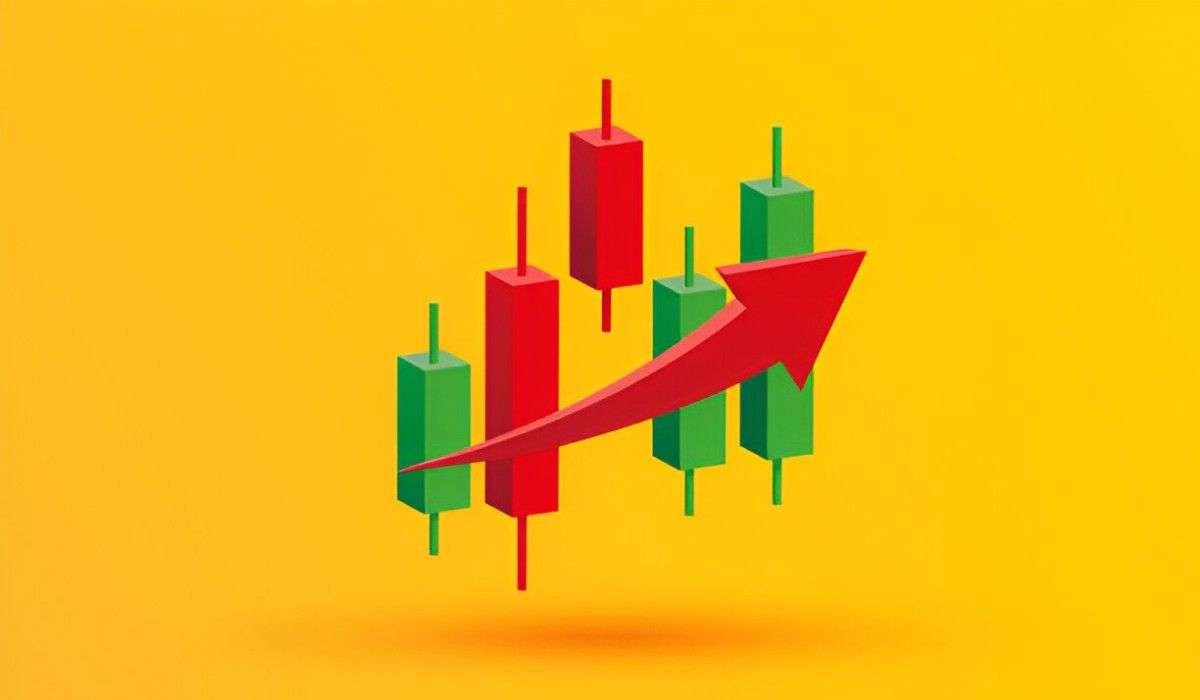Day trading can be an exciting, fast-paced way to make money, but it requires strategy, discipline, and the ability to adapt to rapidly changing market conditions. Over the years, I’ve learned that choosing the right stocks to trade is crucial to long-term success. In this article, I’ll share the 10 best day trading stocks I believe offer great potential for active traders, based on liquidity, volatility, and consistent trading patterns. I’ll provide insights, tables for comparison, and examples to illustrate why each of these stocks is well-suited for day trading.
Table of Contents
What Makes a Stock Ideal for Day Trading?
Before we dive into the list, it’s important to understand the factors that make a stock suitable for day trading. The stocks I focus on tend to have:
- High Liquidity: Liquidity ensures that you can enter and exit positions quickly without significantly affecting the stock’s price.
- Volatility: Stocks with volatility offer price swings that day traders can capitalize on. I look for stocks that experience notable price movements throughout the day.
- Strong Trading Volume: High trading volume means there is enough market activity to generate movement, which is crucial for day traders.
- News Catalysts: Stocks that have frequent news events or earnings reports often see significant movements, making them ideal for short-term trades.
Now, let’s get into the top 10 stocks that fit these criteria.
1. Tesla Inc. (TSLA)
Tesla is one of the most well-known stocks among day traders. It’s highly liquid, with significant daily trading volume, and experiences consistent volatility. These factors make it a prime candidate for short-term trading.
Why TSLA?
- Liquidity: Tesla is a widely traded stock with a massive market cap, ensuring liquidity throughout the day.
- Volatility: Tesla’s stock price can swing by large amounts due to news about production, earnings, or changes in the electric vehicle market.
- Volume: Tesla often sees millions of shares traded each day, providing ample opportunities to trade.
Example Calculation: Suppose you bought 100 shares of TSLA at $950 per share and sold them when the price increased to $970 per share. Your profit would be:
Profit = (970 – 950) * 100 = $2,000
This example illustrates how quick movements in Tesla’s stock price can lead to substantial profits.
2. Apple Inc. (AAPL)
Apple is another popular stock among day traders. Its massive market cap, large trading volume, and regular news coverage make it a reliable choice.
Why AAPL?
- Liquidity: As one of the largest companies in the world, Apple’s stock sees tremendous trading volume, ensuring easy entry and exit.
- Volatility: While not as volatile as Tesla, Apple can still move significantly during earnings reports or news events related to product launches.
- Volume: Apple regularly sees over 50 million shares traded daily.
Example Calculation: Let’s say you bought 50 shares of AAPL at $145 and sold them when the stock price reached $150. Your profit would be:
Profit = (150 – 145) * 50 = $250
A smaller move, but with Apple’s liquidity and consistent price swings, this trade could be repeated multiple times in a day.
3. Nvidia Corporation (NVDA)
Nvidia, a leader in the semiconductor space, is another top pick for day traders. The stock frequently reacts to news about the technology and gaming industries, providing plenty of opportunities for short-term trades.
Why NVDA?
- Liquidity: Nvidia has a high market cap and sees substantial trading volume.
- Volatility: Nvidia is highly volatile, often driven by news about its products or developments in the tech space.
- Volume: Nvidia’s shares are actively traded, with millions of shares moving each day.
Example Calculation: If you buy 200 shares of NVDA at $250 and sell them when the price moves up to $260, the calculation would be:
Profit = (260 – 250) * 200 = $2,000
4. Amazon.com Inc. (AMZN)
Amazon is a well-established stock with plenty of liquidity, and it often experiences price fluctuations due to changes in its business or market conditions.
Why AMZN?
- Liquidity: Amazon is a high-volume stock, ensuring there’s always activity in the market.
- Volatility: Its stock price can move drastically following earnings reports, new product announcements, or shifts in consumer spending.
- Volume: Amazon is one of the most traded stocks on the market.
Example Calculation: Let’s say you purchase 100 shares of AMZN at $3,300 and sell them when the price hits $3,350. Your profit would be:
Profit = (3,350 – 3,300) * 100 = $5,000
5. Advanced Micro Devices, Inc. (AMD)
AMD is another tech stock with excellent potential for day traders. It’s known for its price swings, which are typically tied to news about the semiconductor industry and competition with Intel.
Why AMD?
- Liquidity: AMD has great liquidity with high trading volume.
- Volatility: As a competitor to Intel, AMD’s stock price moves with market sentiment and new developments.
- Volume: AMD’s volume is consistently high, providing numerous opportunities for trades.
Example Calculation: If you bought 150 shares of AMD at $120 and sold them at $125, your profit would be:
Profit = (125 – 120) * 150 = $750
6. Meta Platforms Inc. (META)
Meta, formerly known as Facebook, offers excellent potential for day traders. With constant updates in the digital advertising space and developments related to the metaverse, Meta’s stock is often highly volatile.
Why META?
- Liquidity: Meta is one of the largest tech companies, providing ample liquidity for day traders.
- Volatility: Meta’s stock tends to react strongly to changes in the digital marketing landscape.
- Volume: Meta’s volume regularly surpasses 20 million shares daily.
Example Calculation: If you bought 80 shares of Meta at $300 and sold them at $315, the calculation would be:
Profit = (315 – 300) * 80 = $1,200
7. Netflix Inc. (NFLX)
Netflix is another stock that attracts day traders. With its significant global subscriber base and frequent content releases, Netflix’s stock price can move quickly.
Why NFLX?
- Liquidity: Netflix has a large market cap and trading volume.
- Volatility: Earnings reports and subscriber growth data often cause Netflix’s stock to experience large price movements.
- Volume: Netflix is widely traded, ensuring there is enough market activity to make trades.
Example Calculation: Suppose you bought 120 shares of NFLX at $510 and sold them when the stock price reached $520. Your profit would be:
Profit = (520 – 510) * 120 = $1,200
8. Microsoft Corporation (MSFT)
Microsoft is a tech giant with a broad range of business operations, from cloud computing to gaming. This provides many opportunities for short-term traders to profit from news releases and earnings reports.
Why MSFT?
- Liquidity: Microsoft is one of the most liquid stocks, with substantial volume.
- Volatility: While its volatility may not be as high as smaller stocks, Microsoft’s price movements are often tied to product launches and quarterly earnings.
- Volume: Microsoft regularly sees tens of millions of shares traded each day.
Example Calculation: If you bought 100 shares of MSFT at $275 and sold them at $280, your profit would be:
Profit = (280 – 275) * 100 = $500
9. Palantir Technologies Inc. (PLTR)
Palantir is a technology company that’s relatively new on the market, but it has attracted significant attention. The stock is highly volatile, making it attractive to day traders.
Why PLTR?
- Liquidity: Palantir is a frequently traded stock, especially during earnings season.
- Volatility: As a growth stock in the data analytics field, Palantir often experiences sharp price fluctuations.
- Volume: Palantir consistently sees high trading volumes.
Example Calculation: If you bought 200 shares of PLTR at $25 and sold them at $27, your profit would be:
Profit = (27 – 25) * 200 = $400
10. Boeing Co. (BA)
Boeing is a well-established company in the aerospace sector. Its stock moves frequently due to news about the airline industry and its own operational changes.
Why BA?
- Liquidity: Boeing is a large-cap stock with high trading volume.
- Volatility: Boeing’s stock reacts to news about airplane orders, regulatory changes, and global aviation events.
- Volume: Boeing’s stock sees millions of shares traded each day.
Example Calculation: If you purchased 50 shares of BA at $220 and sold them at $230, your profit would be:
Profit = (230 – 220) * 50 = $500
Conclusion
Day trading can be highly rewarding, but it’s important to choose stocks that offer the right combination of liquidity, volatility, and volume. Based on my experience, the 10 stocks listed above—Tesla, Apple, Nvidia, Amazon, AMD, Meta, Netflix, Microsoft, Palantir, and Boeing—offer plenty of opportunities for short-term traders. By following these stocks closely, you can take advantage of price fluctuations and make profitable trades. Remember, day trading is a skill that takes time to develop, so it’s important to stay disciplined, manage risk, and continuously learn.





